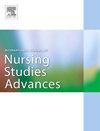以人为本的护理的人生活与痴呆症及其监管的德语养老院:定性焦点小组研究
IF 3.1
Q1 NURSING
International Journal of Nursing Studies Advances
Pub Date : 2025-08-05
DOI:10.1016/j.ijnsa.2025.100400
引用次数: 0
摘要
背景,目的虽然养老院意识到以人为本的护理的相关性,但将这种方法转化为实践仍然很困难。本研究旨在探讨以人为本的痴呆症护理的意义,以及德语疗养院内部法规在将这一概念转化为实践中的作用。方法本研究(定性探索性设计)是疗养院以人为中心的痴呆症护理内部法规整体研究的一部分。在这个子研究中,我们与来自德国、奥地利和瑞士的理论、实践和监管机构的专家就以人为本的痴呆症护理进行了9次虚拟焦点小组讨论。我们通过使用演绎-归纳方法进行定性内容分析来分析数据。结果对于专家来说,领导功能对于养老院以人为本的痴呆症护理概念至关重要。领导力与其他因素有着千丝万缕的联系,比如设定优先事项、心态、结构要求、内部规定和结果。因此,领导力具有一种铰链功能:它使相互关联的要素进行有限和可控的旋转,以说明各个要素从以人为中心到非以人为中心的维度。除了确定优先事项和成果外,思维模式的发展和结构要求与在养老院实施以人为本的痴呆症护理特别相关。专家们描述了传统的内部法规与养老院以人为中心的痴呆症护理法规之间的差异。制定以人为本的痴呆症护理内部条例及其内容是循环对话的集体理解过程的结果。它以自下而上的方式逐步导致对以人为中心的痴呆症护理的共同理解,然后将其记录下来。专家建议将这些规定制定为类似于思维发展的概念和选择,员工可以在照顾住院医生的同时保持自主权。该研究提供了1)深入了解德语养老院如何理解以人为本的痴呆症护理和内部调节的作用;2)准确描述了养老院以人为本的痴呆症护理的心态和法规的发展,这需要自上而下和自下而上的过程。本文章由计算机程序翻译,如有差异,请以英文原文为准。
Person-centred care of people living with dementia and its regulation in German-speaking nursing homes: A qualitative focus group study
Background & aim
Although nursing homes are aware of the relevance of person-centred care, the translation of this approach into practice remains difficult. This study aims to explore the meaning of person-centred dementia care and the role of internal regulations in German-speaking nursing homes in translating this concept into practice.
Methods
This study (a qualitative exploratory design) is part of an overall study of internal regulations about person-centred dementia care in nursing homes. In this substudy, we conducted nine virtual focus group discussions with experts from theory, practice, and regulatory authorities from Germany, Austria and Switzerland about person-centred dementia care. We analysed the data via qualitative content analysis using a deductive-inductive approach.
Results
For experts, the leadership function is crucial for the concept of person-centred dementia care in nursing homes. Leadership is inextricably linked to other elements, such as setting priorities, mindset, structural requirements, internal regulations and outcomes. Leadership therefore has a hinge function: it enables a limited and controlled rotation of connected elements to illustrate the dimensions of the individual elements from person-centred to non-person-centred. In addition to setting priorities and outcomes, mindset development and structural requirements are particularly relevant for the implementation of person-centred dementia care in nursing homes. The experts described differences between traditional internal regulations and regulations about person-centred dementia care in nursing homes. The development of internal regulations for person-centred dementia care and the content of these regulations are consequences of a circular, dialogical collective understanding process. It leads processually in a bottom-up manner to a common understanding of person-centred dementia care, which is then written down. Experts recommend formulating these regulations as concepts and options analogous to mindset development, which employees can use in the care of the resident while maintaining autonomy.
Conclusions
The study provides 1) insight into how person-centred dementia care and the role of internal regulation are understood in German-speaking nursing homes and 2) a precise description of the development of a mindset and regulations for person-centred dementia care in nursing homes that requires both top-down and bottom-up processes.
求助全文
通过发布文献求助,成功后即可免费获取论文全文。
去求助
来源期刊

International Journal of Nursing Studies Advances
Nursing-General Nursing
CiteScore
5.80
自引率
0.00%
发文量
45
审稿时长
81 days
 求助内容:
求助内容: 应助结果提醒方式:
应助结果提醒方式:


